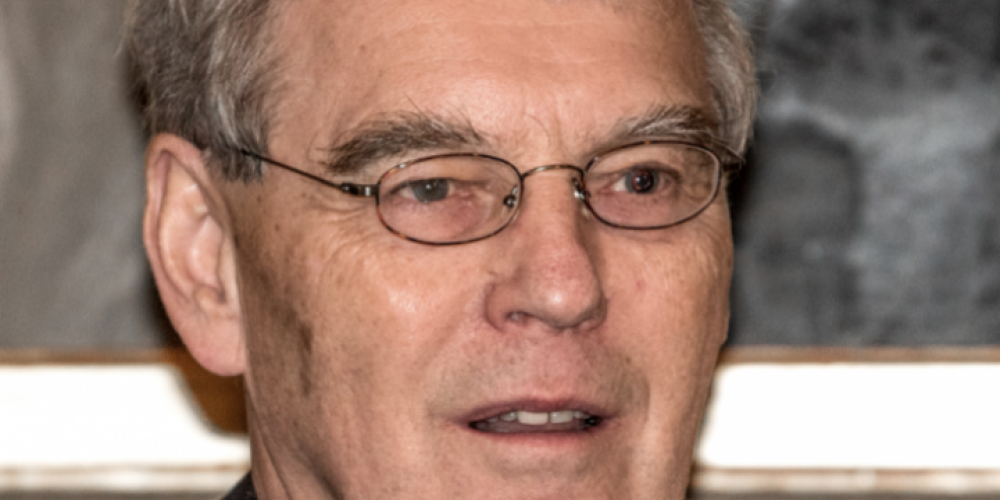
Richard Henderson is one of the three structural biologists who were awarded the Nobel Prize in Chemistry in 2017. Through intense collaboration, he and his colleagues Jacques Dubochet and Joachim Frank achieved a fundamental breakthrough in their field: the development of cryo-electron microscopy (cryo-EM) for the determination of protein structures.
What is so groundbreaking about the technology you developed?
Richard: “For about 50 years, scientists have been trying to determine every protein structure in the human body. Knowing exactly where each atom is located would enable us to understand all diseases and develop drugs to treat them. However, our knowledge of human protein structures currently extends to only 1/10th of these.
“Since 1995, we’ve mainly made use of a technique called ‘X-ray crystallography’ to determine the atomic structure of proteins. But the problem with X-ray is that it can only be applied to proteins that have been crystallized. This is not always possible and often takes years, whereas cryo-EM leads to results quickly and can be used to examine any protein. There are no conditions, no limits to the technology.”
What triggered you to explore the field of cryo-EM?
Richard: “In 1995, I was personally invited to attend a meeting in the French city of Grenoble. The European Synchrotron Radiation Facility (ESRF) was just about to open, and some researchers were planning to build an X-ray microscope at the site. Since I was already aware of the disadvantages of X-ray and the benefits of electron microscopy at that time, I was determined to convince all 50 other attendees to cancel the plan. However, I didn’t succeed.
“That’s when I decided to bring clarity to everyone lacking profound knowledge about the two methods. I started writing a review, and while I was doing so, I got more and more into the subject. Finally, my calculation proved that electron microscopy works a thousand times better and faster than X-ray. From then on, I couldn’t have been more optimistic about further investigating the opportunities of cryo-EM.”
How did the relationship between X-ray and cryo-EM researchers develop from then on?
Richard: “X-ray researchers used to think of us in a derogatory way, and vice versa. However, they’ve now all switched to electron microscopy. Five years ago, only 1/100th of all known protein structures were being detected via electron microscopy. By joining forces, that ratio has now been reduced to 1/10th.”
How important are collaborations like this within the scientific community?
Richard: “They’re becoming ever more important. Take, for example, the history of scientific articles. For years, they would have one or two authors, max. Contributions from 20 authors aren’t exceptional today. The reason for this is that science has become more technically demanding. In structural biology, we need researchers with expertise in molecular biology, genetic manipulation, protein purification, sample preparation, electron microscopy and computing.
“So, it should come as no surprise that the most successful institutions are those in which people are encouraged to have a chat. That could be in the restaurant or canteen, during lunch or over tea time. By analyzing and reflecting on a topic in group setting, researchers may discover that a certain experiment isn’t worth their time. Chance meetings can really work wonders.”
There’s still plenty of competition in the scientific world. How does this affect possible collaborations?
Richard: “Sometimes it affects collaborations in a negative way, but competition can be a good thing, too. It makes people work harder. Patents were even invented to encourage scientists and investors to put all their energy and money into research – without worrying about someone observing from a distance and waiting to steal their ideas.”
Installing the cryo-electron microscope required an investment of 4 million euros. Will the device remain as expensive and exclusive as it is today?
Richard: “We desperately want to ‘democratize’ the microscope in the future. This means we’ll try to render it as simple and accessible as possible. It might develop in the same way as DNA sequencing, which emerged in 1965 and was really unique back then. Today, we can simply send DNA via mail and receive the results the next day. I hope the same will happen to protein structures in the future.”
So, is improving cryo-EM next on your scientific bucket list?
Richard: “Yes, definitely. We knew cryo-EM was going to be good, but there’s still a lot of work to be done in the field. Once the entire cryo-EM field is explored, I might – considering my background in physics – deepen my knowledge and understanding of gravitational waves. So, I won’t be resting on my laurels!
The most successful institutions are those in which people are encouraged to have a chat.